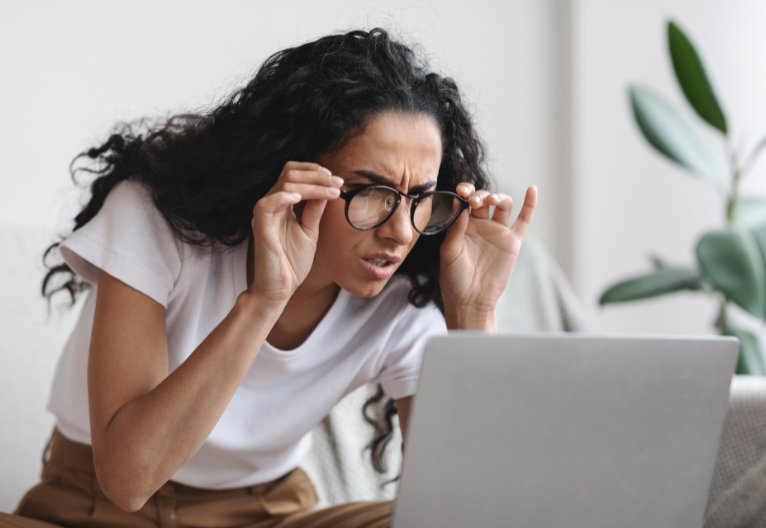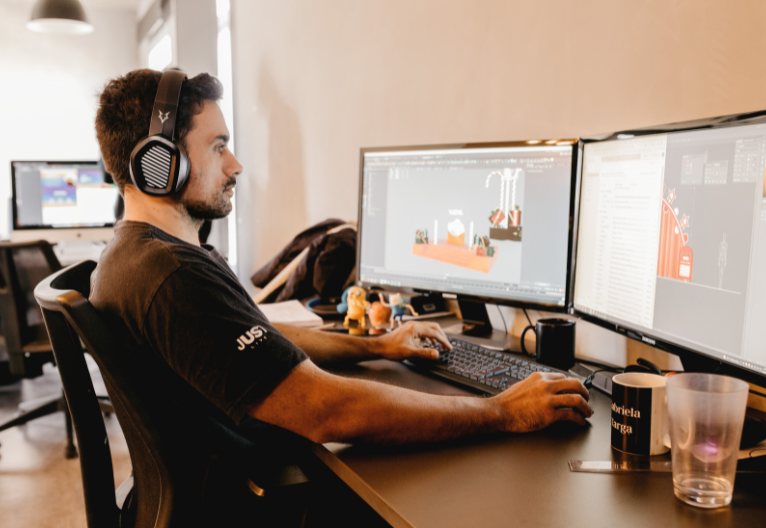Tech neck is here and it’s taking a serious toll on our posture and daily comfort. We spoke to a physiotherapist to find out what’s causing it and how to undo the damage once it’s done.

Working at The Alignment Studio, Matt Chisari is a Melbourne-based physiotherapist with expertise in musculoskeletal rehabilitation and postural dysfunction. With experience in both private practice and NDIS settings, Matt combines evidence-based treatment with a focus on long-term wellbeing. He’s passionate about educating people on the everyday habits that can bring about lasting improvements in physical health.

What exactly is tech neck, and what causes it?
Tech neck is not an official medical condition but rather a colloquial term for a range of symptoms caused by our modern-day reliance on technology. Often accompanied by neck or upper back pain and headaches, the all-too-common postural condition is caused by prolonged time spent scrolling and looking down at screens. Think phones, tablets, gaming consoles and laptops.
Looking down at devices places excessive strain on the neck and upper back muscles, leading to pain, stiffness and poor posture over time. It’s essentially the result of your head being positioned too far forward for too long, increasing the load on your cervical spine.
How common is tech neck in Australia and what age group is most affected?
As screen time continues to rise, tech neck is increasingly common in Australia, affecting individuals of all ages. A recent national survey by the Australian Chiropractors Association (ACA) found as many as 68% of women and 60% of men experience symptoms linked to their device use.
While adults working desk jobs are often affected (and we see this every day in our CBD clinic), teenagers and even children are becoming more prone due to the frequent use of digital devices. We’re seeing this pattern emerge as early as primary school age; however, the most affected group tends to be teens to adults aged 15-40, particularly those who work or study for long hours on screens.
What are the most obvious signs or symptoms to watch out for?
The key signs you might need to put a cap on doom scrolling include:
- Tightness across the shoulders
- A noticeable forward head posture
- Persistent neck or upper back pain
- Headaches (especially at the base of the skull)
- Fatigue or discomfort after short periods of screen use
- Reduced neck mobility with pain or tightness when moving your head backward and forward or looking to either side

Can tech neck lead to more serious health issues if left untreated?
Yes. Left untreated, tech neck can lead to chronic neck and shoulder pain, tension headaches, nerve irritation and disc degeneration.
Over time, the muscular imbalances caused by a forward head posture can also affect jaw function, breathing and overall posture, which impacts your quality of life and productivity.
What daily habits or postures are making the problem worse?
- Looking down at phones/ devices for long periods
- Slouching on couches or in bed while watching content or reading on a tablet or Kindle
- Poor ergonomics, including workstation setups without monitor elevation
- Not taking regular movement breaks during work or study
- Not updating your glasses prescription and straining to see your screen
- Carrying heavy bags on one shoulder (adding asymmetrical load)
- Even small habits like texting while walking or binge-watching on your side can reinforce poor posture over time

Are there any stretches people can do at home or at their desk?
Absolutely! Here are a few simple ones that can help counteract screen time:
- Chin tucks – Gently draw your chin backward (like making a double chin) to align the head with the spine. Hold 5 seconds. Release and repeat for 12 reps. Aim to do this 4 times a day.
- Scapular squeezes – Pinch your shoulder blades together and hold for 5 seconds. Do 12 reps and aim for 4 sets.
- Neck stretches – Gently tilt your head from side to side, lowering your eye towards your shoulder. Look left and right slowly. Do 2 sets of 3 reps, holding for 30 seconds in each position.
- Wall angels – Stand with your back against a wall, feet hip-distance apart and legs away from the wall, with your knees comfortably bent so your lower back, buttocks, shoulders, and head are against the wall. Tuck your chin slightly and raise your arms with your elbows bent. Raise and lower your arms while maintaining contact with the wall. Do 3 sets of 15 reps throughout the day.
What should an ideal “tech posture” look like on the couch and at desks?
At a desk:
- Computer monitor at eye level
- Feet flat on the floor (use a foot stand or box if you can’t reach)
- Back supported by a chair or cushion
- Elbows at 90° resting on armrests or your desk
- Screen an arm’s length away
On the couch:
- Sit upright with a pillow behind your lower back
- Hold devices at eye level, supported by a pillow or cushion under your arm
- Avoid long hours in a slouched or twisted position

What advice would you give parents whose kids are on devices all the time?
Encourage your kids to take frequent movement breaks every 20-30 minutes and use screen timers or reminders to prompt them to stop. Also, ensure that devices are propped up at eye level and not lying in bed or on the floor looking down. Get kids involved in active play and outdoor time to balance their screen use and consider setting a curfew for tech use to help with sleep.
If your child is complaining about headaches or a stiff neck, consider an early postural assessment with a physiotherapist. Intervening early can prevent long-term problems and set them up for healthy use of technology, which isn’t going anywhere!

Is tech neck reversible, or are we stuck with it once it starts?
Good news. In most cases, tech neck is reversible – especially when you catch it early. With increased postural awareness (which your physio can help with), ergonomic adjustments and corrective exercises, most people see significant improvement within weeks.
However, if left unaddressed for too long, structural changes may occur that require longer-term treatment.
Do you struggle with tech-induced discomfort? Leave a comment below.





-

-
-
JH1981, WA
- 31 Aug 2025
👍
0 Likes
-

-
-
BH516504, VIC
- 28 Aug 2025
👍
0 Likes
-

-
-
BH516846, NSW
- 24 Aug 2025
👍
0 Likes
-

-
-
BH519636, NSW
- 09 Aug 2025
👍
0 Likes
-

-
-
BH516706, NSW
- 04 Aug 2025
👍
0 Likes
-

-
-
JH1981, WA
- 17 Jul 2025
👍
0 Likes
-

-
-
BH519636, NSW
- 13 Jul 2025
👍
1 Likes
-

-
-
BH516524, TAS
- 11 Jul 2025
👍
0 Likes
-

-
-
BellaB, ACT
- 09 Jul 2025
👍
0 Likes
-

-
-
BH516382, QLD
- 09 Jul 2025
👍
0 Likes
-

-
-
BH517760, NSW
- 30 Jun 2025
👍
0 Likes
-

-
-
BH517511, SA
- 28 Jun 2025
👍
0 Likes
-

-
-
JH1981, WA
- 28 Jun 2025
👍
0 Likes
-

-
-
sars_angelchik, TAS
- 27 Jun 2025
👍
0 Likes
-

-
-
BH516504, VIC
- 25 Jun 2025
👍
0 Likes
-

-
-
ChiWren, QLD
- 25 Jun 2025
👍
0 Likes
Post a commentTo post a review/comment please join us or login so we can allocate your points.